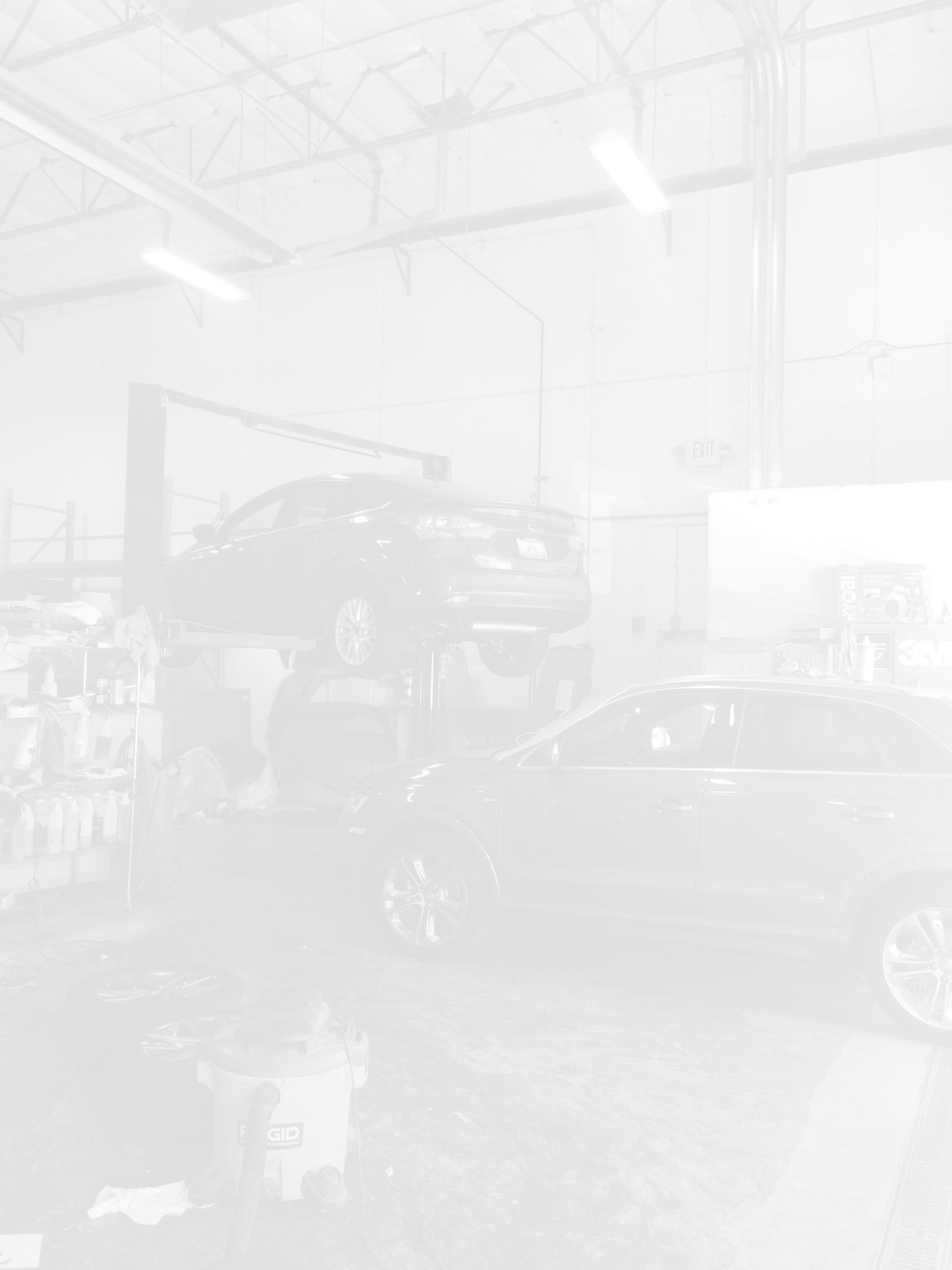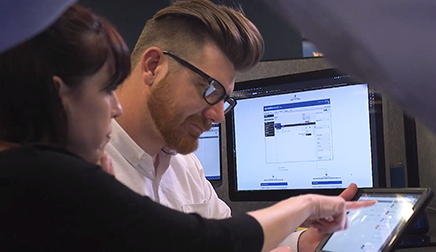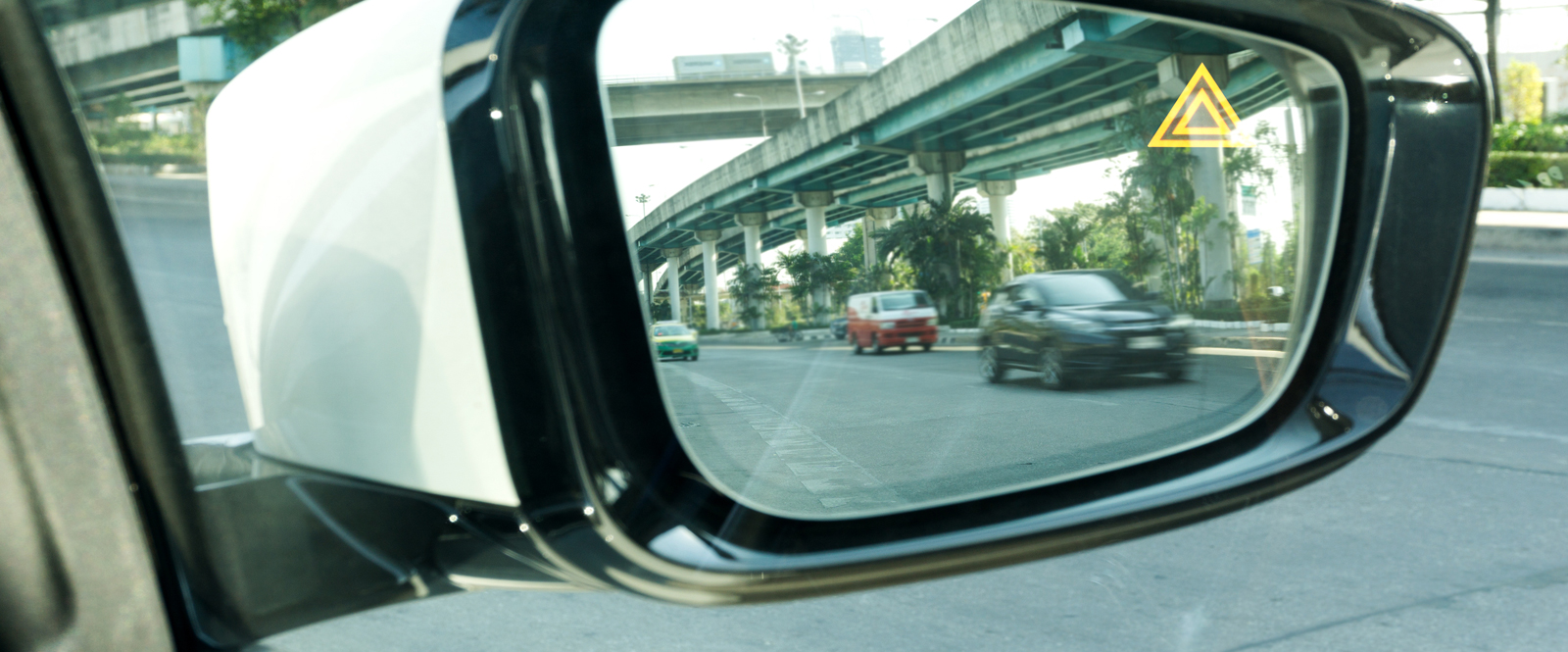
ADAS: Sometimes Where You Least Expect It
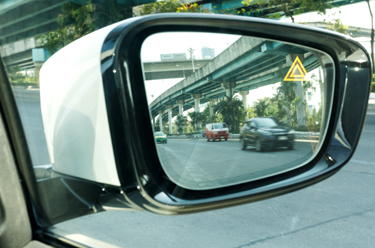
As technology continues to evolve, Advanced Driver Assist Systems (ADAS) have become increasingly common in vehicles, providing drivers with enhanced safety features and driving assistance that have made roads safer for us all.
Industry experts are estimating that approximately 71% of registered vehicles in the U.S. will be equipped with at least one ADAS function by 2026. However, many may not realize the numerous components and factors that are tied to ADAS that can impact its performance. From the condition of a vehicle's windshield to the quality of repairs and replacement components, there are various elements that can affect the accuracy and functionality of ADAS, and it’s essential to be aware of them to ensure proper function and repair of these systems.
These systems are designed to keep drivers safe on the road, but they can be easily overlooked during routine maintenance or repair work. To ensure that these ADAS systems continue to function correctly, it's crucial to follow the original equipment manufacturer (OEM) service procedures. This includes checking and, if necessary, replacing and calibrating any ADAS sensors that are mounted or part of the vehicle, such as forward-facing cameras, radar sensors, and ultrasonic sensors.
To help shops access OEM-accurate ADAS requirements and procedures, ALLDATA recently added an ADAS Quick Reference feature that takes users directly to vehicle-specific ADAS information in ALLDATA Repair® or ALLDATA Collision®.
Failure to do so could compromise the safety and effectiveness of the ADAS system, putting the driver and other road users at risk. Therefore, it is essential to pay attention to the small details and take a thorough approach to bumper repair procedures to maintain the integrity of the ADAS system. In this article, we will explore some well-known and not so well-known components and factors that are critical to the proper operation of ADAS and their impact on vehicle safety.
Windshields:
These have undergone several changes over time. In the early days of cars they were made of flat glass, which was not very safe, since it would shatter into large pieces during impact. Later, tempered glass was introduced, which was stronger and safer than flat glass, but still prone to shattering. Then, finally in the 1920s, laminated glass was developed, which consists of two layers of glass, with a layer of polyvinyl butyral, or PVB (a type of resin) in between. This is still the same type of glass used in windshields today, however in order to accommodate all these new ADAS features, windshields have had some slight changes to design and construction.
Features such as Automatic Emergency Braking and Forward Collision Warning often rely on sensors or cameras that are mounted behind the windshield to detect approaching vehicles or obstacles on the road. In certain cases, the windshield itself can have an impact on the performance of these systems. Some windshields are now made with special coatings to reduce glare and improve visibility for cameras and sensors. Others are designed to have more precise optical quality, either through higher quality glass and materials, or by their specific shape or curvature. This optimizes the field of view for cameras and sensors that are mounted behind the windshield.
This is why it’s especially important to refer to factory service information whenever replacing a windshield, and to double check for any Technical Service Bulletins (TSBs) that may reference the use of special tools, techniques, or require the use of OEM parts.
Take for example, this 2018 Toyota Camry Hybrid. Upon looking up the installation procedure for the windshield, it immediately gives us a caution/notice to only use a Toyota genuine windshield, due to a bracket that is necessary for the forward recognition camera to be re-installed.
In addition to the use of genuine OEM parts, the Toyota service information also explicitly mentions to make sure that the windshield adhesive does not spread beyond the designated areas, otherwise it can obstruct the view of the forward facing camera mounted behind the windshield.
Vehicle>Windows and Glass>Windshield>Service and Repair>Removal and Replacement> Windshield Glass
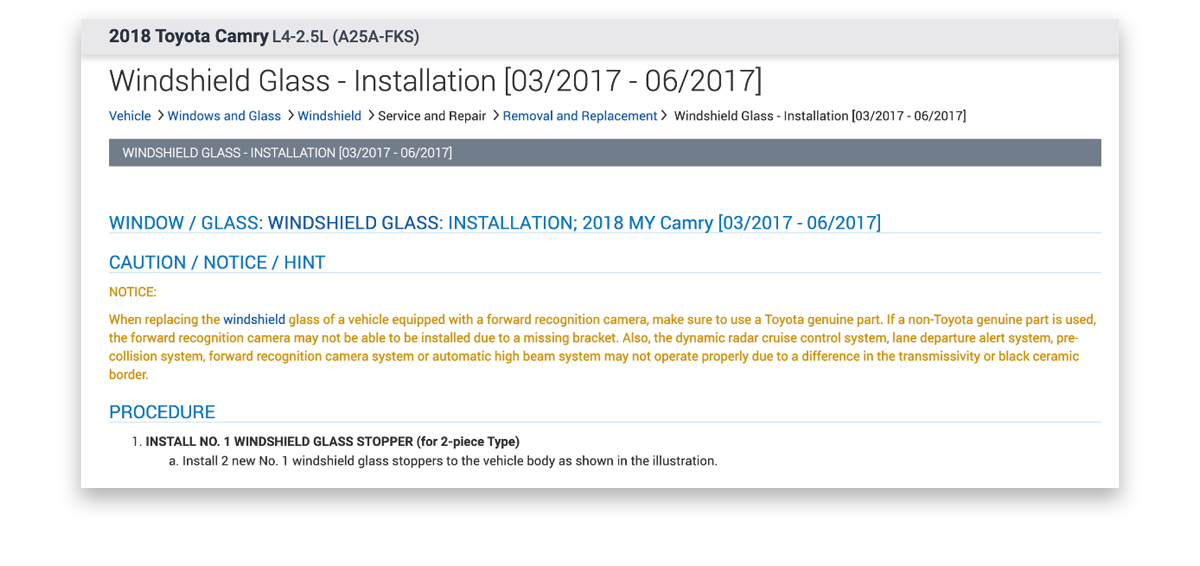
Side View Mirrors:
Initially designed as a simple tool to help drivers see what’s behind them, these mirrors have evolved into a sophisticated system that often contains ADAS-related components. One of the most common ADAS systems found in side view mirrors is blind spot detection (sometimes also referred to as blind spot monitoring). This can come in the form of either sensors or cameras mounted on the mirror used to detect when a vehicle is in the driver’s blind spot.
In this example, we take a look at a 2019 Honda Civic sedan, specifically the removal and installation procedure of the side view mirror. At a glance, the procedure appears to be short, only three steps. However, if we examine the last step of the installation process, it shows a LaneWatch camera aiming procedure. Upon further reading, we can see that the LaneWatch camera (located inside of the side view mirror) requires an “aiming” procedure any time that camera, mirror, or mirror housing are replaced. In addition, it even requires this “aiming” procedure any time the door position has been adjusted.
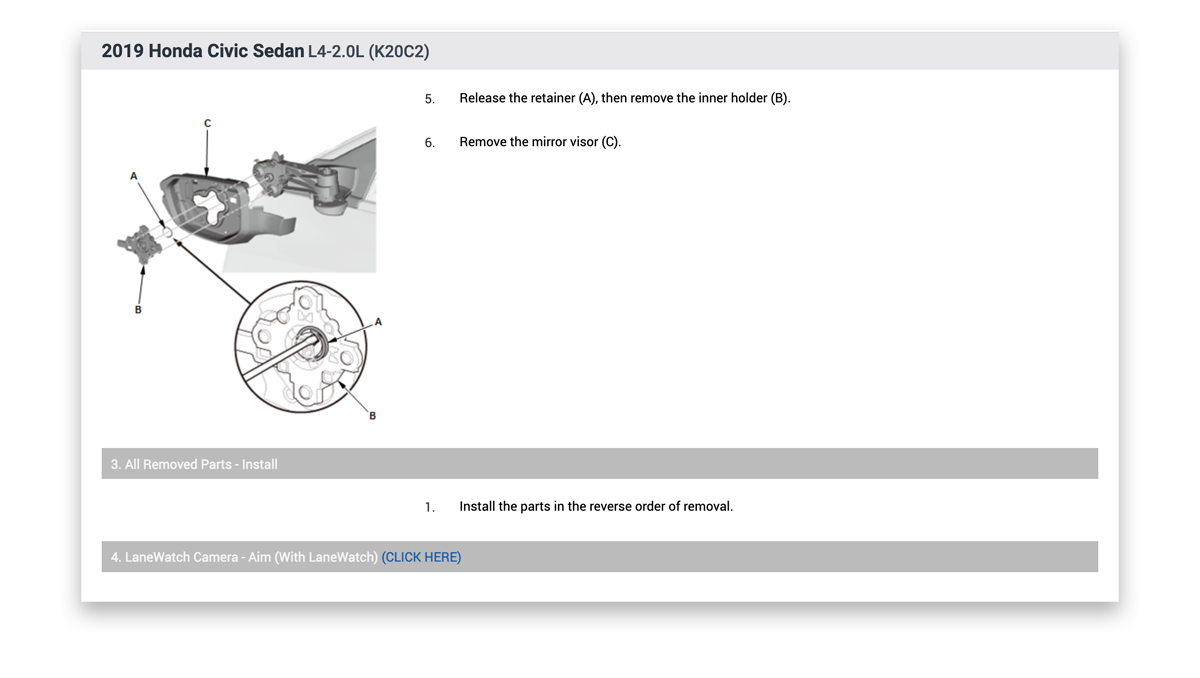
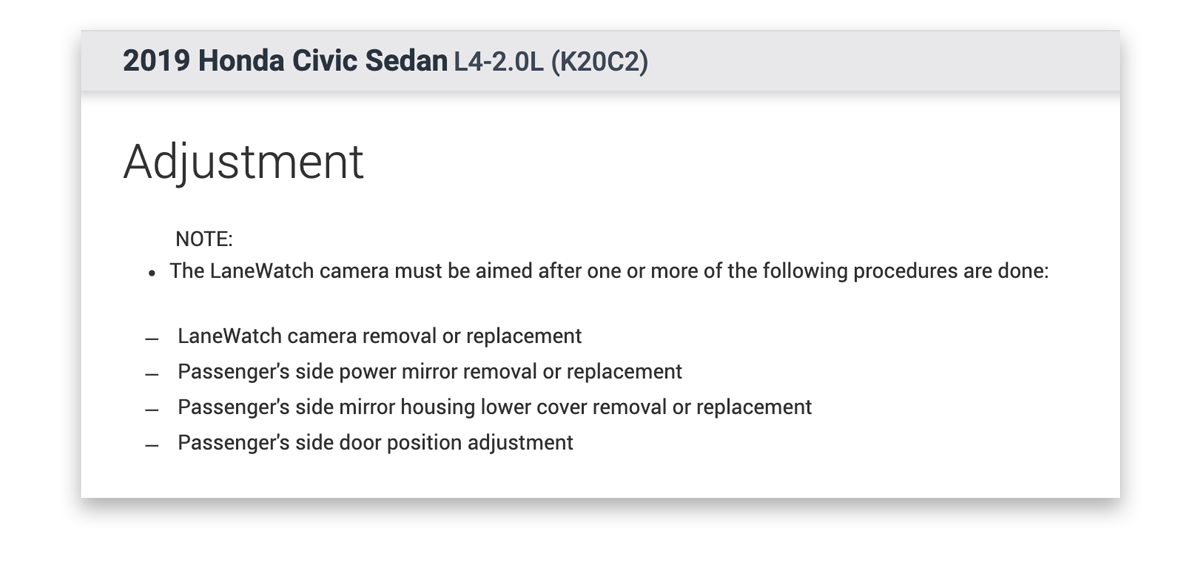
Front and Rear Bumper:
In the front bumper of a Toyota, for example, there may be a Collision Avoidance Sensor or Millimeter Wave Radar Sensor that can be a part of several systems on the vehicle, such as the automatic emergency braking system, forward collision warning, and adaptive cruise control. This sensor is typically located in the center of the bumper or grille and is responsible for detecting lane markings and other vehicles on the road by using electromagnetic waves. If this sensor is not properly installed or calibrated, it can cause the ADAS system to perform incorrectly, leading to DTCs (Diagnostic Trouble Codes), warning lights, and even potentially leading to accidents.
Similarly, the rear bumper may contain a backup camera or parking assist sensors that are part of the vehicle's parking assist system. These sensors are designed to detect obstacles or other vehicles when the driver is backing up or parking, and can provide audible or visual alerts to help the driver avoid collisions. However, if these sensors are damaged or not properly calibrated, they may provide incorrect information to the vehicle's ADAS system, causing it to malfunction.
It's important to remember that even small details, such as a bumper that is misaligned, or a sensor that is slightly damaged, can cause the ADAS system to perform incorrectly. For example, a small dent in the front bumper may not seem like a big deal, but it can affect the alignment of the collision avoidance sensor, causing it to detect lane markings incorrectly. Therefore, it's crucial that technicians pay attention to every detail when working on a vehicle to ensure that the ADAS system remains fully functional.
In this example we’ll take a look at a 2020 Toyota Corolla. The service information immediately gives us a hint that whenever the front bumper is damaged or deformed due to an accident, or bumper area is repaired, Toyota requires that a Millimeter Wave Radar Sensor adjustment be performed.
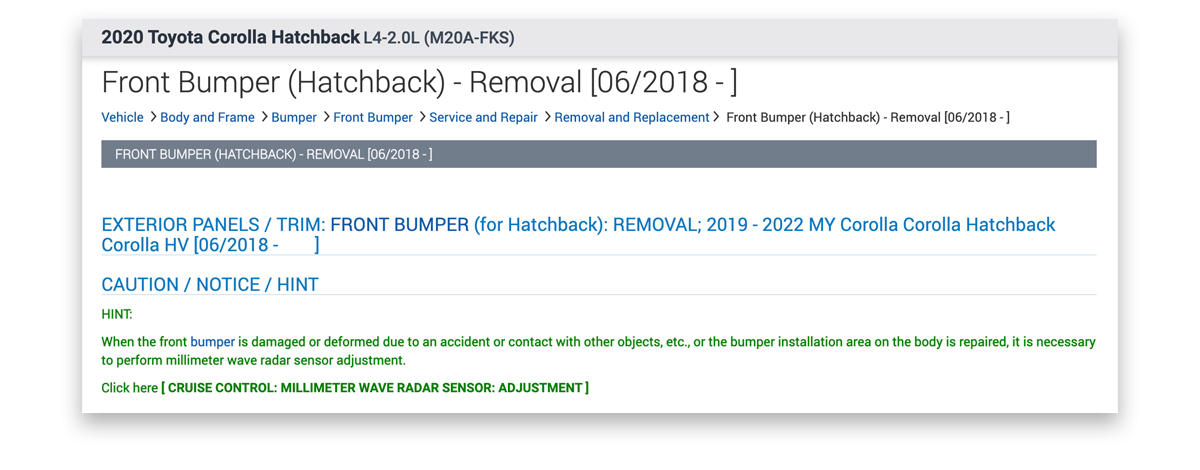
Double-checking if components affect the ADAS system is crucial for ensuring the safety of the driver and passengers. Taking the time to verify if components are associated with the ADAS system can also save you time by preventing unnecessary repairs and minimizing the amount spent on come-backs or sublets.
To help shops access OEM-accurate ADAS requirements and procedures, ALLDATA recently added an ADAS Quick Reference feature that takes users directly to vehicle-specific ADAS information in ALLDATA Repair® or ALLDATA Collision®. It links directly to the ADAS system/component by name, such as Backup Camera or Forward Collision Warning, provides the location of the component, and identifies component removal/replacement requirements that could result in extra labor for calibration or sublet costs based on procedure complexity.
Ready to see for yourself why the majority of auto body shops (74%) use ALLDATA’s industry-leading OEM repair information? Check out ALLDATA Collision and our integrated technology platform of shop productivity tools.
If you would like to read more articles like this one please subscribe to ALLDATA News.
